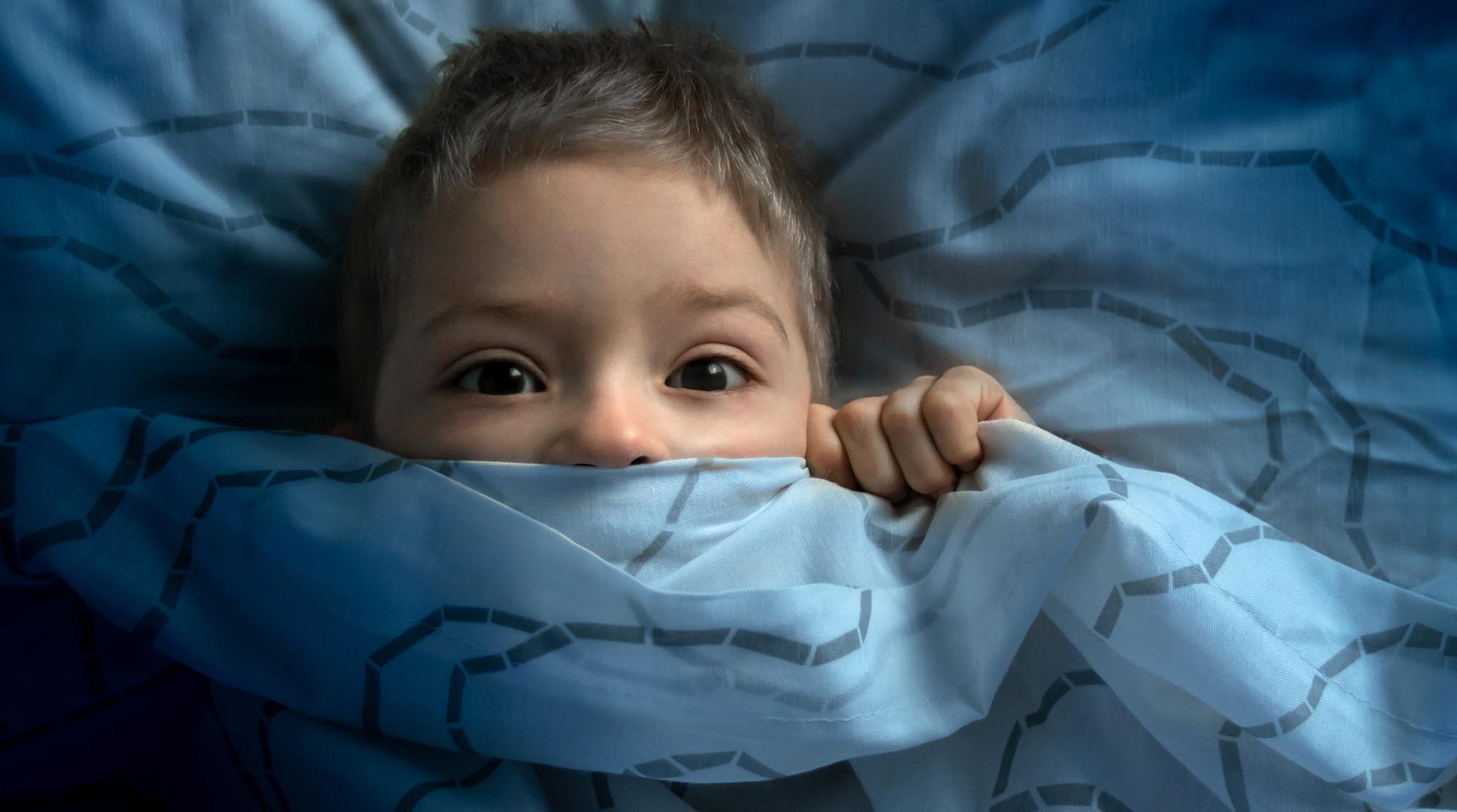Parenting Through Trauma Informed Glasses
By Kristin Edling, MA, MFT, BHT
Every person needs to come from a home that has a foundation in love and safety. This is especially true for children that have experienced traumatic events, such as abuse and neglect. Parenting as a human experience presents with its own set of challenges, victories, and struggles, however parenting through and after a child has experience trauma requires a special parenting skill set. Parenting through a Trauma Informed Lens impacts that way each parent or caregiver views the world of their child.

Trauma-Informed Parenting
In order to achieve a Parenting Trauma Informed skill set the first thing is to be aware of the various forms of trauma and how they can impact the child as well as the family as a whole. An event or experience is considered to be traumatic if there is a threat to the safety of the child or a perceived threat to their safety. The most commonly reported forms of trauma are Neglect, violence, accidents, life events, world events and loss.
Each child will experience and respond to traumatic stress in their own unique way. This reaction for reach of child can be dependent on previous life experiences, such as how someone in authority has responded in support or anger towards that child in the past, as well as that child’s individual developmental level. These responses tend to interfere with the child’s functioning abilities within their daily life and their relationships with others.
Signs of Traumatic Stress in Children:
Preschool Aged Children
- Fear of Parent/Caregiver separation
- Weight loss
- Poor eating/drinking capabilities and habits
- Frequent crying
- Frequent screaming
- Nightmares
Preschool Aged Children
- Suddenly becoming anxious or fearful
- Feeling guilt
- Feeling shame
- Difficulty sleeping
- Difficulty Concentrating
Preschool Aged Children
- Feelings of loneliness
- Feelings of being Depressed
- Formation of self harming behaviors, including Eating Disorders
- Substance Abuse
- Hypersexuality
Long Term Effects
- Learning difficulties
- Suspensions
- Expulsions
- Increased need for lifelong Mental Health Services
- Increased physical health problems
- Chronic Substance Use/Substance Abuse
- Increased involvement in Foster Care
- Increased involvement in Juvenile Justice System/Criminal Justice System
Trauma Informed Parent Glasses – How You See Your Child
At times being a Parent seems as there are so many hats that you have to wear on a daily basis and being a Trauma Informed Parent creates glasses for you instead of a hat as it changes the way you view your child.
Your child’s brain develops and matures from back to front, with the most vital functions such as automatically breathing, heart beating and caregiver awareness being some of the first. Logic and reasoning are some of the last developing functions of the Brain. Which makes the human experience of being a parent a unique one. Through our development and various experiences our brain creates blueprints based on our interactions and experiences in order to try and ensure our survival. Surviving on a biological level is the goal and purpose of creating and maintaining these blueprints.

Dealing with Fear and Anxiety in Children
When a scary event, such as a traumatic event or experience occurs the brain wants to ensure the brain and the body remembers what happened and how that individual reacted in order to ensure that they survived. So the brain believes it has done a its job in ensuring the body survived the traumatic event and then it takes that information and creates a blueprint through a repetitive process of copy and paste to ensure that it is not forgotten.
The Brain will also include the sensations of the traumatic event, such as what may have been experienced through smell, physical sensations, taste, sound and then couples it with the emotions of extreme fear and blends them together with the memory. This can create an experience that the child is reliving the traumatic event and experience on an ongoing basis or when a sensation is experienced without the traumatic event.
Rather than being able to utilize logic and reasoning, the Brain uses its previous blueprints to react in their current experiences. This reaction is often referred to as being “triggered”. However, that phrase has been generalized in recent years and is intended to mean that the traumatic event of the past is causing the child to demonstrate behaviors in the present. Rather viewing the sensations that are bringing about behaviors in the present that were used by the brain during other times of traumatic stress, is Activating. Utilizing the term of Activating or an Activation is centered around the Brain, the Nervous System and the body as a whole. It is important to note that the child is not ‘being bad’ or ‘misbehaving’, rather the child is reacting just like their biology has been programmed to.
In addition to the Brian’s copy and paste capability, the Nervous System also utilizes the Fight, Flight, Fawn, and Freeze responses as a means of surviving traumatic stress. These responses are drawn out of a child who has felt a sense of helplessness generating the body’s protective mechanisms to spring into action. As we review these bodily reactions it is important to remember that these responses are considered to be automatic on an instinctual level with the goal of to survive the danger that the person is being faced with.

Traumatic Stress Responses in Children and Adults
Fight: Fight is the bodily response that is activated through an adrenaline surge to prepare the body to confront a threat that is real or perceived. The Fight response can manifest in forms of being confrontational, argumentative, verbal and/or physical aggression. A child reacting in a Fight response is a means of trying to empower themselves after an event or experience where the child had a sense of a lack of control.
Flight: Flight is considered to be on the other end of the Activation spectrum as it is a means of removing oneself from the real or perceived danger. During Flight the behaviors are consistent with trying to avoid people, places and situations in creating emotional and physical distance between the child and the event. A common generalized scenario would be if someone yells ‘Fire”, the automatic response is often one of flight, run to the exit and get out of there.
Freeze: Freeze is a common response to being too overwhelmed to escape from real or perceived danger. Freeze is a state of being emotionally and/or physically immobilized in such a way that there is a state of numbness, paralysis or even dissociation. A common generalized example would be an animal that plays dead in the presence of a predator just hoping that they threat will move on.
Fawn: Fawn is a response that can often be seen in children that have been neglected and ‘parent-ified’. This is characterized by a sense of people pleasing and wanting to be helpful and agreeable in order to avoid a perceived or real threat. A Fawn response often emerges from the need for perceived safety and connection regardless of the child’s individual needs and boundaries. An example of a Fawn response as a parent is imagine you show up to school and are told by your child’s teacher that there is a bake sale tomorrow and you need to bake 100 cookies by tomorrow morning. The Fawn response would be to pretend to be excited and able to do that in an effort to make sure there is connectedness between you and the teacher and other parents in the classroom.
It is important to remember that the body can present with one or more of these reactions and they are instinctual, meaning they are not the child’s choice to have them. As a parent you can decrease a child’s reactions by creating and maintaining a safe environment that is consistent, loving and empathetic to foster healing and health.

What To Do When Your Child Confides In You About Abuse or Neglect
Anchor Yourself As a Parent
As a Parent, if your child confides the abuse or neglect that has been experienced maintaining our own regulation can be like we are fighting our own biological responses. More often than not there is a reaction, which can be counterintuitive to healing, so trying to anchor yourself to the present moment can be helpful. This anchoring or grounding can be done by orientating yourself to the present moment through sitting and being aware of the feeling of the chair underneath you, removing your shoes and experiences the sensations of the ground beneath your feet or taking a sip of a cold beverage. It is also completely understandable to need to take a moment to collect your thoughts and emotions regarding what has been disclosed.
Following your child’s disclosure give yourself permission to step away. Ensure that you express that your child is safe and that you’re going to make sure that they stay that way. Many of us going into a state of being fact finders, understandably wanting to know everything in the moment which can create a new blueprint for your child of not feeling seen, heard and validated. In the world of Trauma Therapy, we say that healing begins when our experience has been seen/heard and validated by another. So rather than going to a place of interrogating them about the details, express that you are going to make sure that the child is safe. Being patient and allowing grace for yourself and your child is a step in the direction of healing.

Tips For Dealing with Trauma in Children
As a Trauma Informed Parent understanding how your child’s brain and body are reacting following a traumatic event creates a perspective that avoids the questions most parents ask themselves about or to their children, such as ‘why are you doing this?’ Instead with a Trauma Informed Parenting Lens you are able to ask yourself “what is happening for my child in right now at this exact time?’ And ‘how can I be my child’s safe person’. In having an awareness about these specific questions there are three vital components of helping your child heal at home as a Parent and they are:
- Safety – Be the safest person in your child’s life. Be present in a nonjudgmental manner. Be open to listening and reinforcing their boundaries and their voice of their needs. For example, if there is a family member at the family party insisting that your child gives them a kiss goodbye and the child is resisting, running away or even verbalizes no as the Parent being able to reinforce your child’s boundary to that family member so that your maintaining what feels safe for your child in that moment.
- Love – Show them that they are loveable, loved and reinforce what a loving relationship should feel like. A way that we can show a child that he or she is loveable is through modeling. Modeling is when we show our child how to do it before they can do it themselves. For example, not body shaming yourself. When going to buy clothes for yourself with your child avoid statements such as ‘this makes me look fat’. Rather statement such as ‘this isn’t the best for my body’, can prevent feelings of shame and being unlovable.
- Regulation – A Dysregulated Adult Will Never Regulate a Dysregulated Child… say that again and again to yourself. When as child is reacting through their behaviors, such as a tantrum, it is important for the parent to be as calm as humanly possible. That child’s brain and body is in need of being calmed, regulated, on a brain and nervous system level. A calm voice coupled with calm mannerisms can assist the parent in calming the child and reinforcing love and safety.

Parenting Tips For Tantrums
After the behaviors have resolved and the child has been regulated it can be beneficial for the Parent to review the incident. For an example of a tantrum, a parent can review the indecent through the ABC’s of Behavior. A is for Antecedent, what happens just before the behaviors occurred. B is for Behaviors, what behaviors was my child displaying and how do those behaviors serve them in that moment. For C is the Consequences, what are the natural consequences that the child experiences as a result of their behaviors. It is important to note that Consequences does not equate to Punishment.

Sharing Control & Choice Theory
Additional strategies for creating a relationship and environment of healing and health for your child is through sharing control with your child when possible. Sharing control, or Choice Theory, can seem counterintuitive to how you were raised by your parents, but you are growing in your Trauma Informed Parenting which means trying new things even if they are safely uncomfortable. This model of shared control can be perceived control or actual control.
Perceived control creates the perception that the child is in control of the outcome of their choice. Actual control puts the child in the driver seat completely. Regardless, of whether or not the control is perceived or actual, by giving your child a sense of control through simple choices there is a sense of safety and empowerment. The subtle message that begins to become your child’s blueprint is that I have a voice and my choice matters. It also creates a blueprint that I can say no and it will be listened to. It is important that you as the parent are agreeable to either choice that the child makes and that you respect the child’s decision.
An example of this is would be ‘are you going to put your shoes on or would you like me to help you put your shoes one?’, either way the child is making a choice where their shoes are going on.

Consistency Is Key In Parenting
As mentioned before, consistency in your parenting actions as well as with routine can be helpful. A way to integrate consistency with your schedule, especially in a busy world, can be really difficult to achieve and maintain. An example of consistency that you can implement is by if your child is going to therapy for their traumatic stress, on therapy days the same dinner is had. This helps to decreases feelings of anxiety and create or reinforce a sense of safety.
Parenting as an experience can be quite the journey and each of us are learning along the way, so give yourself some grace in knowing that you are doing the very best you can in this very moment. Parenting with a Trauma Informed Lens also means modeling self love.





